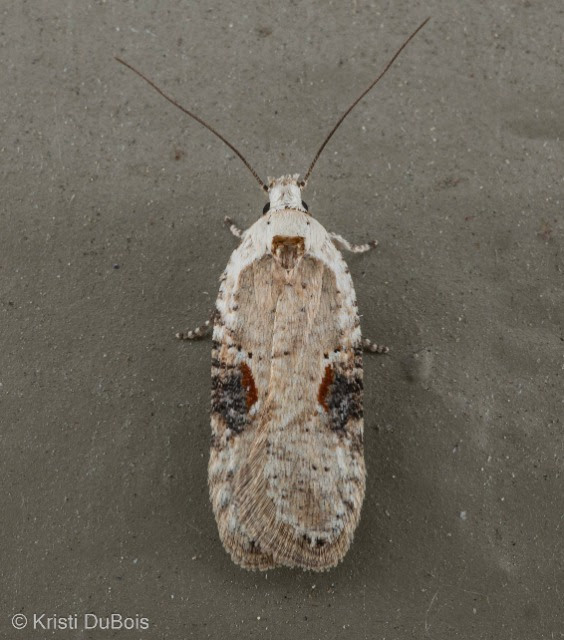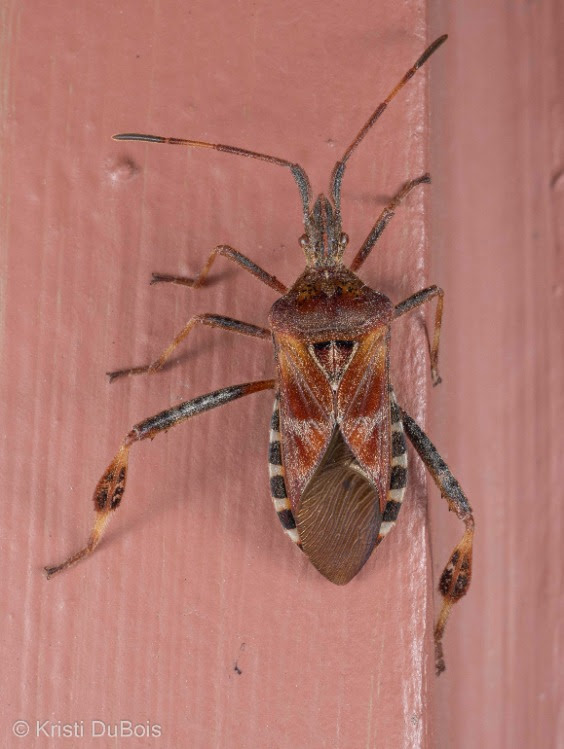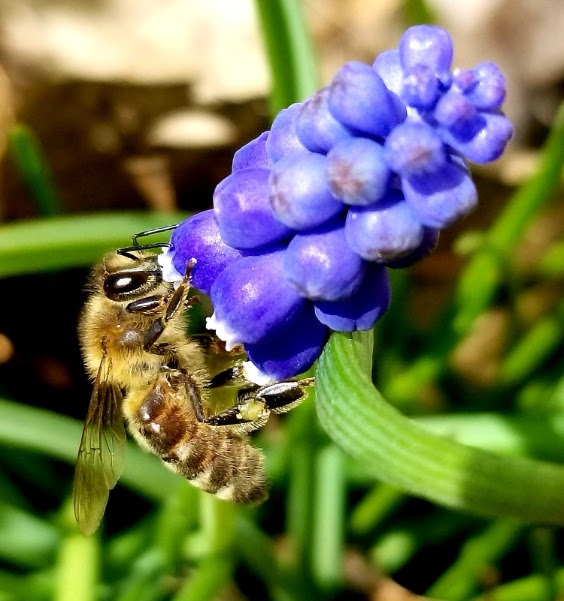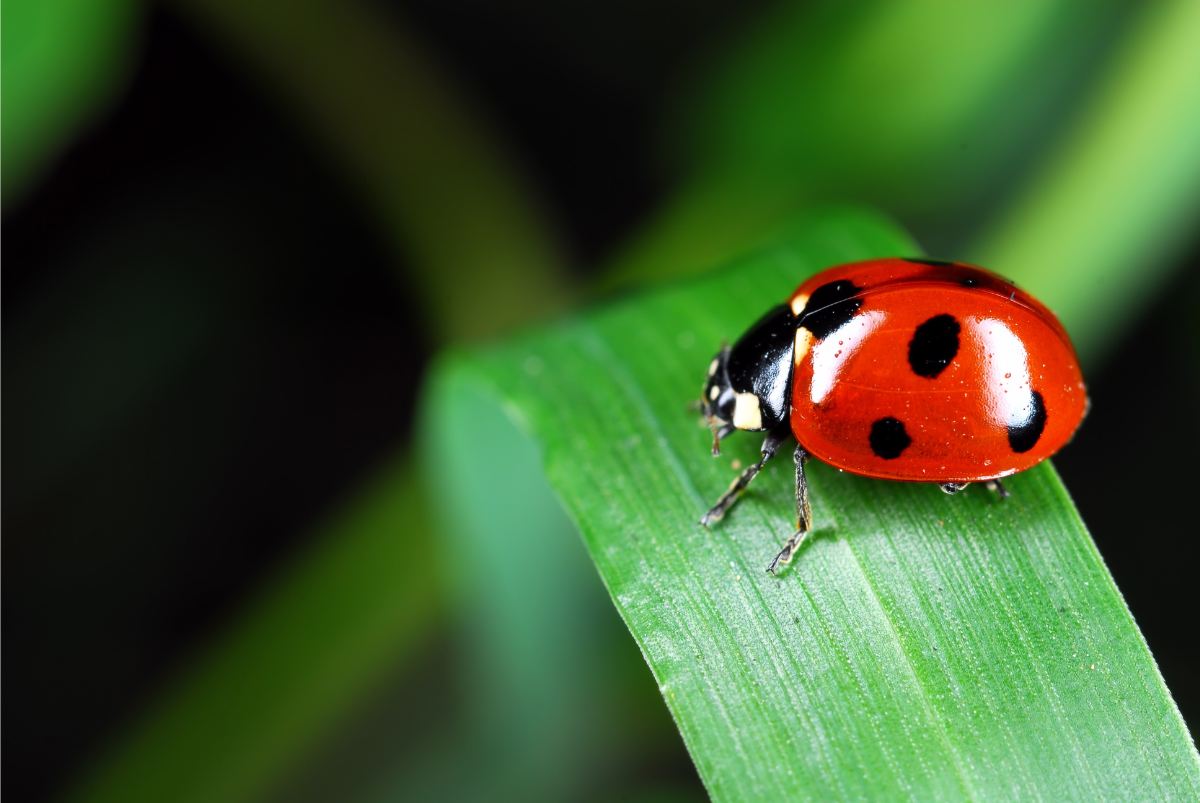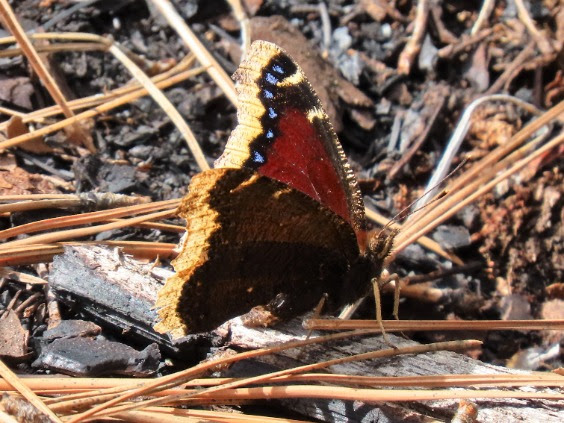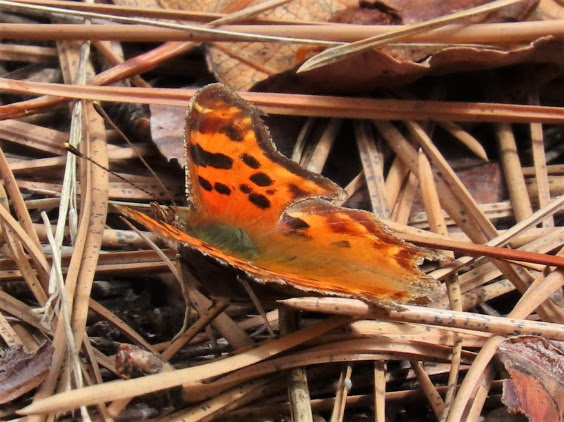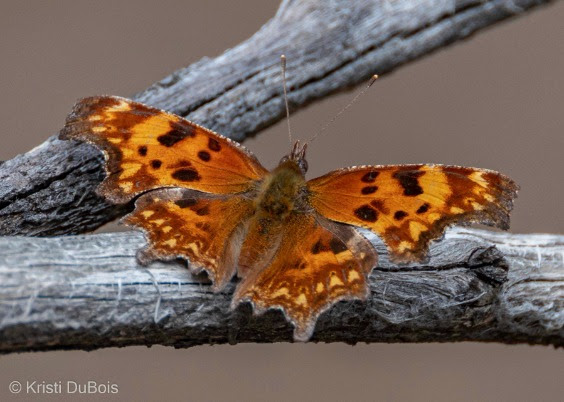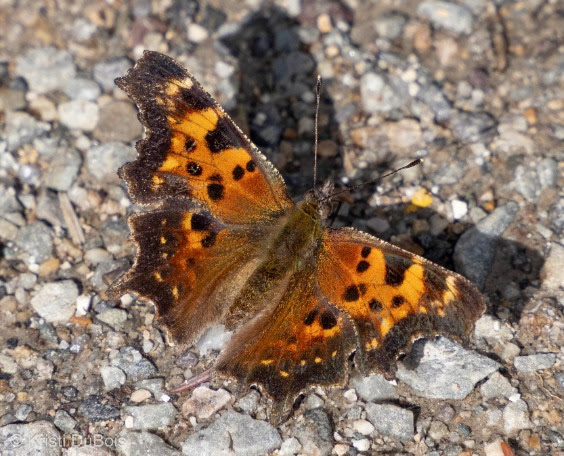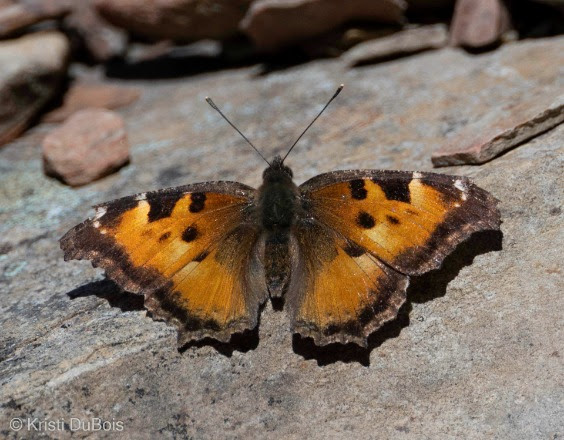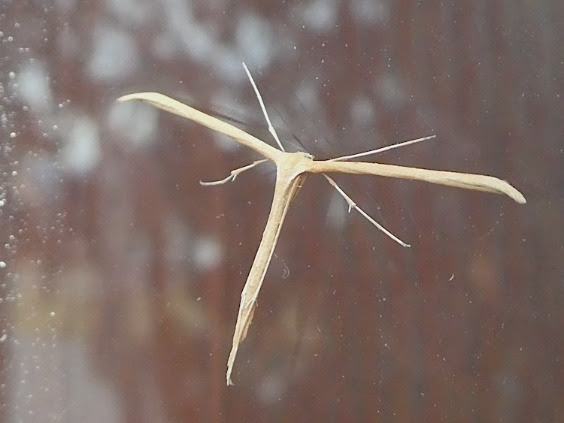Poison Hemlock Moths, and their sole host plant, Poison Hemlock (Conium maculatum), were introduced from Europe. The plant arrived in North America in the 1800s, and the first recorded moth in […]
Read MoreArticles by Misty Nelson
Western Conifer Seed Bug (Leptoglossus occidentalis)
Perhaps you had some of these insects enter your home last fall. They weren’t looking to eat anything, just a warm place to hang out until spring. And maybe you […]
Read MoreEuropean Honey Bee or Western Honey Bee (Apis mellifera)
The honey bee was one of the first domesticated insects and is the primary species kept by beekeepers for honey production and pollination services. Thanks to their domestication, they can […]
Read MoreNotes from the Lab: Why Not Ladybugs?
Welcome back to the Lab! In response to our recent series on classroom insects, we received a question regarding yet another type of insect that is popular for its use in gardens. The […]
Read MoreMourning Cloak (Nymphalis antiopa)
Mourning Cloaks are extra special—they’re Montana’s state insect! They’re also relatively easy to identify in flight on account of their larger size, gold-yellow border, brilliant blue dots, and brownish-maroon interior. […]
Read MoreSatyr Comma (Polygonia satyrus)
Size: Wingspan 1 3/4 – 2 1/2 inches (4/5 – 6.4 cm) Photo by: Kelly Dix on 3/30/22 near Florence, MT
Read MoreOreas Comma (Polygonia oreas)
Size: Wingspan 1 5/8 – 1 7/8 inches (4.2 – 4.8 cm) Photo by: Kristi DuBois on 3/27/22 in Mineral County, MT
Read MoreGreen Comma (Polygonia faunus)
Size: Wingspan 1 3/4 – 2 1/2 inches (4.5 – 6.4 cm) Photo by: Kristi DuBois on 3/26/22 in Missoula County, MT
Read MoreCalifornia Tortoiseshell (Nymphalis californica)
California, Compton, and Milbert’s Tortoishells can be found in our area and are generally smaller than the Mourning Cloak. The California’s brightly colored dorsal (upper) side of the wings is […]
Read MorePlume Moth (family Pterophoridae)
If you see a moth in an “airplane” or “T” perching posture, you can be certain it is a type of plume moth. In this posture the deeply notched forewings […]
Read More